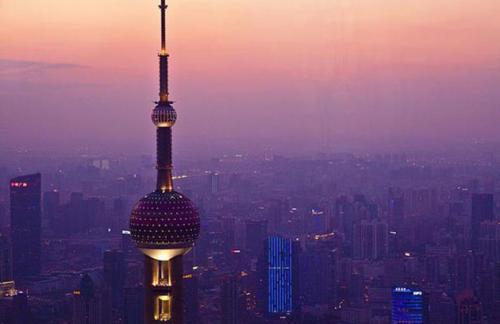Shanghai
Feb,15 2019

Geography and Climate
Shanghai lies on China's east coast roughly equidistant from Beijing and Guangzhou. The Old City and modern downtown Shanghai are now located in the center of an expanding peninsula between the Yangtze River Delta to the north and Hangzhou Bay to the south, formed by the Yangtze's natural deposition and by modern land reclamation projects. The provincial-level Municipality of Shanghai administers both the eastern area of this peninsula and many of its surrounding islands. It is bordered on the north and west by Jiangsu, on the south by Zhejiang, and on the east by the East China Sea. Its northernmost point is on Chongming Island, now the second-largest island in mainland China after its expansion during the 20th century.[49] The municipality does not, however, include an exclave of Jiangsu on northern Chongming or the two islands forming Shanghai's Yangshan Port, which are part of Zhejiang's Shengsi County. This deep-water port was made necessary by the increasing size of container ships but also the silting of the Yangtze, which narrows to less than 20 meters (66 ft) as far out as 45 miles (70 km) from Hengsha.
History and Culture
On 17 January 1958, Jiading, Baoshan, and Shanghai County in Jiangsu Provincebecame part of Shanghai Municipality, which expanded to 86,300 hectares. The following December, the land area of Shanghai was further expanded to 591,000 hectares when more surrounding suburban areas in Jiangsu were added: Chongming, Jinshan, Qingpu, Fengxian, Chuansha and Nanhui. In 1960 the urban districts were reduced to 10.
During the 1950s and 1960s, Shanghai became the center for radical leftism since it was the industrial centre of China with most skilled industrial workers. The radical leftist Jiang Qing and her three allies, together the Gang of Four, were based in the city. Yet, even during the most tumultuous times of the Cultural Revolution, Shanghai was able to maintain high economic productivity and relative social stability. During most of the history of the PRC, Shanghai has been a comparatively heavy contributor of tax revenue to the central government, with Shanghai in 1983 contributing more in tax revenue to the central government than Shanghai had received in investment in the prior 33 years combined. This came at the cost of severely crippling welfare of Shanghainese people and Shanghai's infrastructural and capital development. Its importance to the fiscal well-being of the central government also denied it economic liberalizations begun in 1978. Shanghai was finally permitted to initiate economic reforms in 1991, starting the massive development still seen today and the birth of Lujiazui in Pudong.
Shanghai is sometimes considered a center of innovation and progress in China. It was in Shanghai, for example, that the first motor car was driven and (technically) the first train tracks and modern sewers were laid. It was also the intellectual battleground between socialist writers who concentrated on critical realism, which was pioneered by Lu Xun, Mao Dun, Nien Cheng and the famous French novel by André Malraux, Man's Fate, and the more "bourgeois", more romantic and aesthetically inclined writers, such as Shi Zhecun, Shao Xunmei, Ye Lingfeng and Eileen Chang.
In the past years Shanghai has been widely recognized as a new influence and inspiration for cyberpunk culture. Futuristic buildings such as the Oriental Pearl Tower and the neon-illuminated Yan'an Elevated Road are a few examples that have helped to boost Shanghai's cyberpunk image.
Economy
Shanghai is the commercial and financial center of China, and ranks 5th in the 2018 edition of the Global Financial Centres Index(and third most competitive in Asia after Singapore and Hong Kong) published by the Z/Yen Group and Qatar Financial Centre Authority. It also ranks the most expensive city to live in Mainland China, according to the study of Economist Intelligence Unit in 2017.
Education
Shanghai ranked first in the 2009 and 2012 Program for International Student Assessment(PISA), a worldwide study of academic performance of 15-year-old students conducted by the OECD. Shanghai students, including migrant children, scored highest in every aspect (math, reading and science) in the world. The study concludes that public-funded schools in Shanghai have the highest educational quality in the world.[105][106] Critics of PISA results counter that, in Shanghai and other Chinese cities, most children of migrant workers can only attend city schools up to the ninth grade, and must return to their parents' hometowns for high school due to hukou restrictions, thus skewing the composition of the city's high school students in favor of wealthier local families.
Shanghai is the first city in the country to implement 9-year mandatory education. The 2010 census shows that out of Shanghai's total population, 22.0% had a college education, double the level from 2000, while 21.0% had high school, 36.5% middle school, and 1.35% primary school education. 2.74% of residents age 15 and older were illiterate.
 :
: